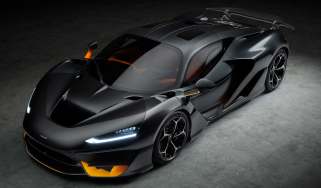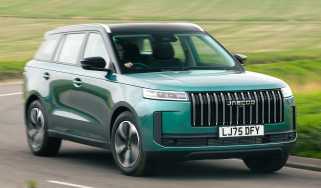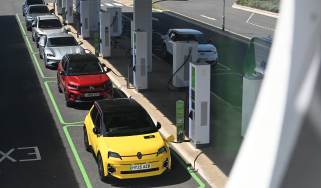McLaren W1: specs, full details and Arctic testing of the landmark hypercar
The W1 is the successor to McLaren’s F1 and P1 hypercars, so how does the new kid match up to its red-hot predecessors?
We’re told that the new McLaren W1 is the fastest-accelerating, fastest-lapping, road-legal apex-predator the British outfit has ever produced, so naturally it’s making sure the 1,258bhp, rear-wheel-drive hypercar can endure anything thrown at it – and as we can see, still get sideways.
During extreme conditions in the freezing Arctic Circle, engineers stress-tested everything on the car, including the complex, enormously powerful hybrid drivetrain. The chassis, traction control and torque vectoring systems were under particular scrutiny, as McLaren wants to ensure the W1 can deliver its enormous power everywhere.
The W1 is priced from “circa £2 million” including taxes in the UK. A total of 399 models will be built, and all customer cars are already accounted for. It represents the start of the next era of ultra-high-performance engineering for McLaren, which is now under new ownership, but has been at the cutting edge of hypercar design since the launch of the legendary F1 and hybrid McLaren P1.
Here we examine how this cutting-edge new creation hopes to match its landmark ancestors.

Powertrains
While 1992's F1 was modern for the time in terms of chassis and aero tech, the engine was old-school. McLaren turned to BMW and engine whisperer Paul Rosche to develop a naturally aspirated 618bhp V12. This motor, with a 9,000rpm red line and individual throttle bodies, powered the rear wheels through a six-speed manual transmission and little else. There was no traction control and no stability programme.
The P1 moved this on, because the intervening 20 years had seen not only a refinement of tech such as turbocharging, but also the application of hybrid drive. McLaren’s 3.8-litre twin-turbo V8 lacked the V12’s theatrics, but produced a combined figure of 903bhp, including its e-motor. Its flat-plane crank still let it rev to a super-high red line, spurred on by two turbos. To fill out the low end, McLaren’s KERS- style hybrid system integrated learnings from Formula One.
Although the W1 also uses a twin-turbo V8 and hybrid system, McLaren designed this new 4.0-litre engine from scratch, targeting both impressive numbers – such as a 9,000rpm red line and a 915bhp power figure – and enhanced emotion via its power delivery and soundtrack.
The hybrid system has also seen a major upgrade, and while the V8 alone outperforms the P1’s combined output, the 342bhp e-motor brings the W1’s total to 1,258bhp. With the W1 tipping the scales at 1,399kg, the result is the highest power-to-weight ratio (899bhp/tonne) of any McLaren.
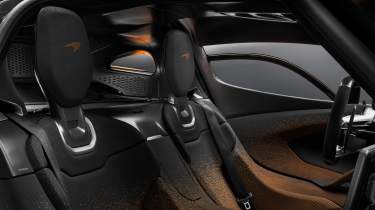
Weight/materials
All three cars buck the trend of many rivals by retaining rear-wheel drive. This benefits weight and steering feel, but also compromises acceleration due to the issue of channelling all that power to the back axle. But this is where McLaren’s advances in electronic traction-management systems come in.
McLaren said the F1 would sprint from 0-62mph in approximately 3.2 seconds, but with no traction control, it’s up to the driver to mete out the V12’s power and torque. Nearly two decades later, the P1 had a launch-control system that helped augment the engine and e-motor to maximum effect, allowing it to hit 62mph in 2.8 seconds.
There’s scarcely a faster rear-wheel-drive car that’s been on sale since, but the W1 pips it. McLaren also says the power delivery to the rear is more measured, predictable and tractable, while cutting the 0-62mph time to only 2.7 seconds.
The breathtaking numbers don’t stop there, either. The W1 will do 0-124mph in 5.8 seconds and 0-186mph in “less than” 12.7 seconds. That makes it faster than a McLaren Speedtail in a straight line, and three seconds quicker than a Senna around the firm’s reference circuit at the Nardo test facility in Italy. It’ll stop from 124mph in just 100 metres.
Acceleration
The F1 was a result of collaboration between its chief engineer and creator, Gordon Murray, and designer Peter Stevens. In 1992, the main hypercar competition came from heavily styled cars that were arguably more striking than the F1. The aero was balanced but understated, helping to achieve that head-spinning 241mph top speed.
The P1 kept this mentality of pure functionality, but designer Frank Stephenson added more flair and the aero package was far more sophisticated, thanks to the huge rear wing and under-floor design. The adjustable suspension dropped the car right to the floor in Track mode, and made it illegal to drive on the road in that setting due to its lower stance.
The W1, designed in-house by Rob Melville and his team, takes the notion of aero trickery to the extreme. The rear wing, or Active Long Tail, can extend backwards by 300mm to improve airflow and give the W1 an even more aerodynamic shape. Working together, the car’s “Formula One-inspired ground-effect aerodynamics” deliver up to 1,000kg of downforce at 174mph.
Carbon fibre galore and other materials
All three models sit on a carbon-fibre tub-style chassis, with aluminium subframes that carry the suspension up front, and the engine, transmission and suspension at the rear. But the advances in carbon-fibre tech mean they vary substantially.
The F1 used exotic materials and racing-derived tech, such as 18-carat gold leaf around the engine bay and a bag-style fuel tank. The P1’s Monocage took a step forward by housing the model’s battery pack behind the front seats.
But the W1 moves things on by incorporating the seats into the bucket itself and using 3D printing for suspension parts to shed weight, increase stiffness and create stunning-looking mechanical elements. The W1 also sits on a set of ultra-lightweight magnesium wheels wrapped in unique Pirelli P-Zero Trofeo RS tyres.
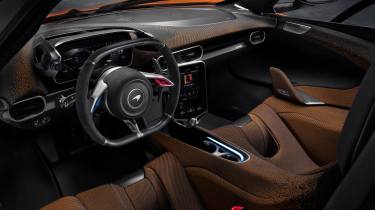
Interior
No McLaren hypercar was designed to be a comfortable cruiser, and the interior design on all three is minimalist, but the quality and functionality of every component were uncompromised.
The F1’s central driving position limited its interior design, but the more traditional P1 introduced DRS and Pass buttons on the steering wheel and glass in the roof to increase the amount of light. The W1 follows this path and offers supreme forward vision, although there is no rear window. Instead, the W1 uses a digital mirror fed via a camera situated below the car’s shark-fin antenna.
Opening up the W1’s Anhedral doors reveals a completely new cabin for this car. The fixed seats mean the pedals, steering wheel and primary controls all move to fit the driver, offering what McLaren calls “the purest connection to the car”.
The flat-bottom steering wheel isn’t teeming with buttons like other supercars these days, but does have one large one to control the car’s Boost ability and another for the Drag Reduction (DRS) functionality – the latter deploying that active rear wing.
McLaren claims “virtually unlimited bespoke options” are available via the brand’s MSO programme, including a new tailored, lightweight InnoKnit interior material that is “knitted to fit” – almost completely eliminating waste and off-cuts. It’s available in multiple colours, and can even be incorporated into the speaker grilles of the car’s Bowers & Wilkins stereo.
| McLaren F1 | McLaren P1 | McLaren W1 | |
| Price now (new): | £22m (£540,000) | £1m+ (£866,000) | £2m approximately |
| Engine: | 6.1-litre V12 | 3.8-litre V8 twin-turbo, hybrid | 4.0-litre V8 twin-turbo, hybrid |
| Power/Torque: | 618bhp/651Nm | 903bhp/900Nm | 1,258bhp/1,340Nm |
| Transmission: | Six-speed manual | Seven-speed DCT | Eight-speed DCT |
| 0-62mph: | 3.2 seconds | 2.8 seconds | 2.7 seconds |
| Top speed: | 241mph | 217mph (limited) | 217mph (limited) |
Did you know you can buy a used car with Auto Express? Choose from tens of thousands of cars with trusted dealers around the UK. Click here to buy used with Auto Express now...
Find a car with the experts


